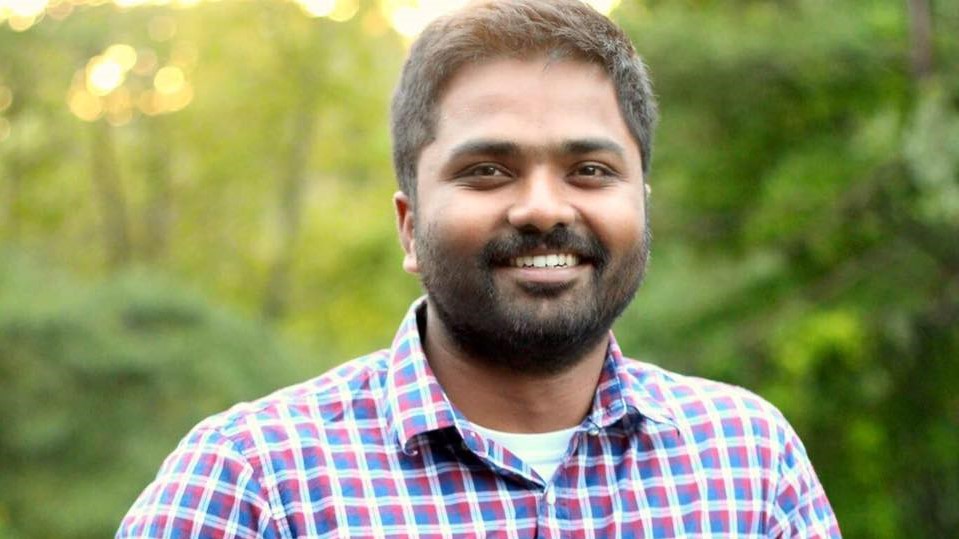BME PhD Candidate, Aditya Jagarapu, will be defending his dissertation
TITLE:
Mathematical Modeling of Anatomical and Latent Reservoirs in HIV Towards Possible Cure Strategies
When: Wednesday, February 3rd @ 10:00 am
Where: Zoom Meeting: https://udel.zoom.us/j/2391983918 Password: jagarapu
Committee Chair: Ryan Zurakowski, PhD
Committee: Abhyudai Singh, PhD., Fabrizio Sergi, PhD., Nii Attoh Okine, PhD.
ABSTRACT:
Although anti-retroviral (ARV) therapy can suppress the amount of HIV found in the blood to an undetectable level, it has been shown that treatment cannot eliminate the virus completely as rapid viral rebound is observed during treatment interruptions. One of the major barriers in curing HIV is the persistence of long-lived memory CD4+ T cells that have an integrated viral DNA which is replication competent but transcriptionally silent. These cells only minimally express viral protein, making them inaccessible targets for immune responses as well as every available antiretroviral drug. Random activation of these replication competent latent reservoirs is one of the major contributors towards the rapid viral rebound after treatment cessation. There is also evidence that sanctuary sites or anatomical reservoirs with non-suppressive levels of antiretroviral drugs during treatment exist and support ongoing low-level replication. Clinical studies measuring antiretroviral drug concentrations in lymph nodes (LNs) revealed lower concentrations compared to peripheral blood levels, which raises the possibility that drug concentrations in some tissues may be low enough to allow ongoing HIV replication even in treated patients, forming sanctuary sites. Motivated by these challenging observations, the overarching goal of my thesis is to understand the formation, behavior and existence of these latent and anatomical reservoirs using mathematical models that will aid towards possible curative strategies in HIV.
The first objective of this research is to develop mathematical models that understand drug penetration in anatomical reservoirs such as lymph nodes. We achieve this by integrating known pharmacokinetic and pharmacodynamic (PK/PD) parameters of the anti-retroviral drugs into a spatial model of reaction and transport dynamics within a solid lymph node lobule. Our integrated spatial dynamics – pharmacokinetic model reproduced the experimentally observed exclusion of antivirals from lymphoid sites. The strongest predictor of drug exclusion from the lymphoid lobule, independent of drug class, was lobule size; large lobules (high inflammation) exhibited high levels of drug exclusion. PK/PD characteristics associated with poor lymphoid penetration include high cellular uptake rates and low intracellular half-lives. To determine whether this exclusion might lead to ongoing replication, target CD4+ T cell, infected CD4+ T cell, free virus, and intracellular IC50 values of anti-retroviral drugs were incorporated into the model. Notably, for median estimates of PK/PD parameters and lobule diameters consistent with low to moderate inflammation, the model predicts no ongoing viral replication, despite substantial exclusion of the drugs from the lymphoid site. Monte-Carlo studies drawn from the prior distributions of the PK/PD parameters predicts increases in site-specific HIV replication in a small fraction of the patient population for lobule diameters greater than 0.2 mm; this fraction increases as the site diameter/ inflammation level increases. The model shows that cART consisting of two nRTIs and one PI is the most likely treatment combination to support formation of a sanctuary site, a finding that is consistent with clinical observations. We further modify our concentric spherical shells assumption to account for a more generalized asymmetric model built using a regular tetrahedron mesh framework that will help us in distinguishing the different modes of drug transport (i.e. active and passive diffusion) in the lymph node architecture, addressing which might inform possible drug design techniques that can suppress ongoing low level viral replication in these sanctuary sites.
The second objective of this research is to develop mathematical models in light of new experimental evidence on the behavior of latent reservoirs that might suggest possible curative strategies. In patients on suppressive antiretroviral therapy, the half-life of these cells is approximately 4-5 years, with clonal expansion of the cells resulting in an overall reservoir half-life in excess of 40 years. A recent study has shown that prior to the initiation of antiretroviral therapy, the half-life of this latent reservoir is on the order of two weeks. We present two models explaining the wide disparity in the on- and off-treatment half-lives of the quiescent infected T cells. In the first model, generalized (antigen non-specific) immune activation due to the high HIV viral loads explains the high latent reservoir turnover rates in the absence of treatment. If this mechanism dominates, we demonstrate that reduction of the latent reservoir size is possible, either through the administration of exogenous antigen or through the use of timed treatment interruptions. In the second model, direct killing of reservoir cells by HIV drives the increased turnover off-treatment. If this mechanism dominates, modulation of the reservoir size is not possible by the methods described above. Previously published models of the immune response to HIV show the possibility of inducing post-treatment control by reducing the latent reservoir size; by incorporating the same immune response dynamics in our first model, it is shown that post-treatment control can be induced using either exogenous antigen administration or timed treatment interruptions.

